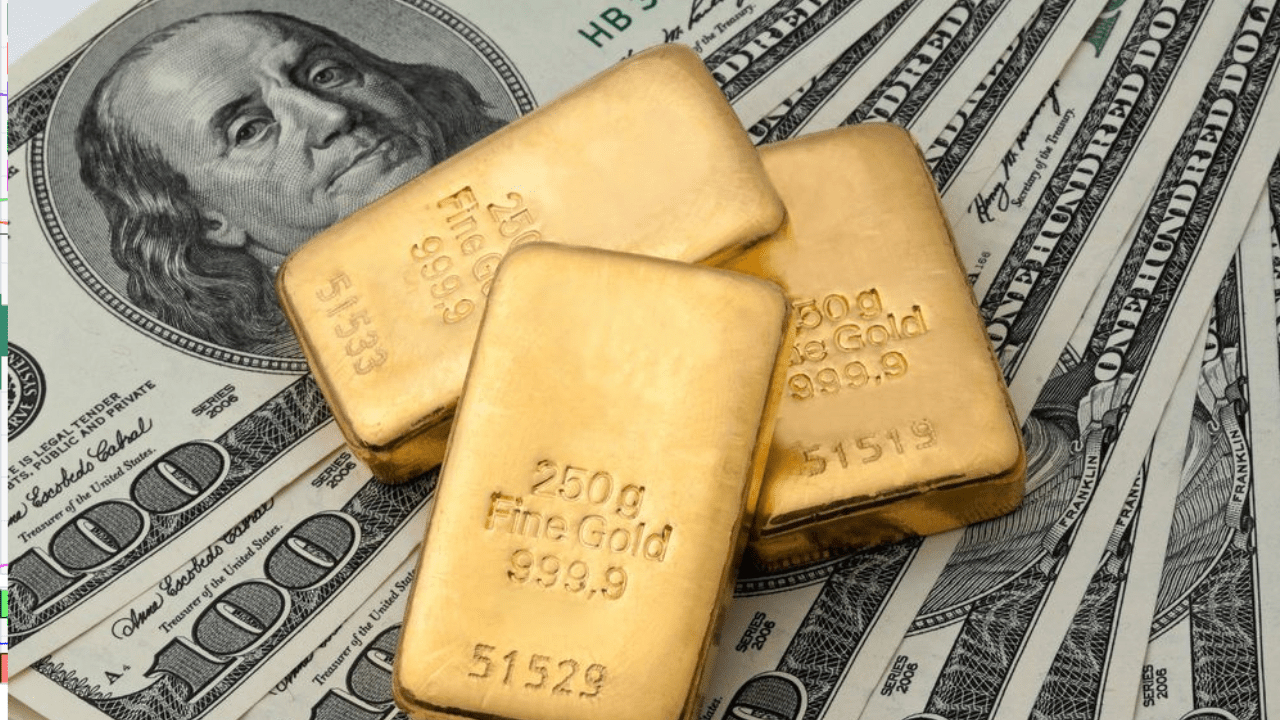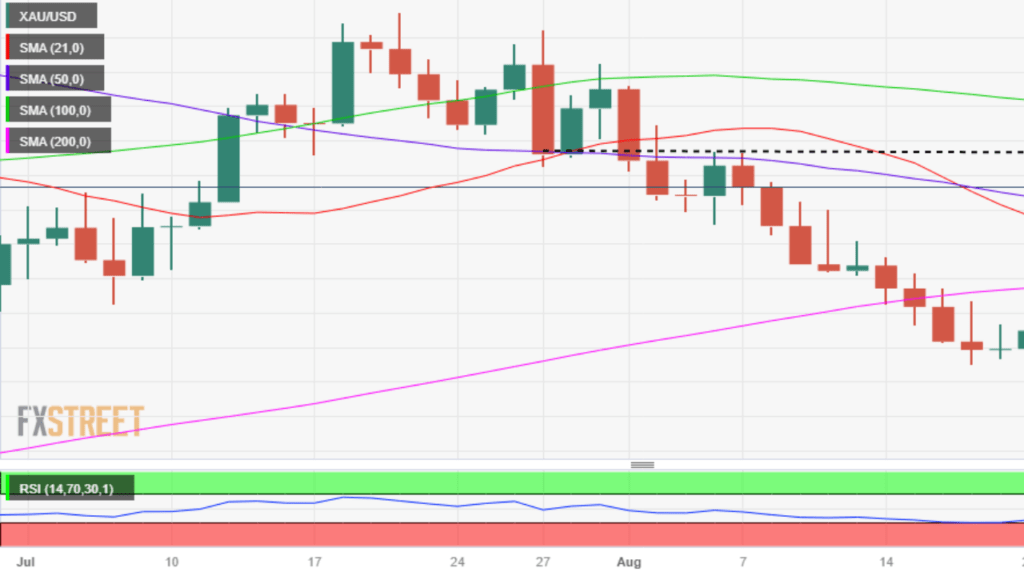
Yes, that is correct. Gold prices rose on Tuesday, August 30, 2023, as the US consumer confidence index fell to 106.1. This is the lowest level since November 2022. The decline in consumer confidence was attributed to a number of factors, including rising inflation, concerns about the economy, and the ongoing war in Ukraine. Gold is often seen as a safe haven asset, and it tends to rise when investors are feeling uncertain about the economy. The decline in consumer confidence suggests that investors are becoming more worried about the economy, which could lead to further gains for gold prices.

The following are some of the reasons why gold prices rose as US consumer confidence fell:
- Rising inflation: Inflation is a major concern for consumers and businesses alike. When inflation is high, it erodes the purchasing power of money, which can make people feel less confident about the economy. This can lead to an increase in demand for gold, which is seen as a hedge against inflation.
- Concerns about the economy: The US economy is facing a number of challenges, including rising inflation, a potential recession, and the ongoing war in Ukraine. These concerns can make investors feel less confident about the future, which can also lead to an increase in demand for gold.
- The ongoing war in Ukraine: The war in Ukraine is also a major source of uncertainty for investors. The war has caused energy prices to rise, which could lead to higher inflation. It has also disrupted supply chains, which could hurt economic growth. All of these factors can make investors feel less confident about the economy, which can lead to an increase in demand for gold.
It is important to note that the relationship between gold prices and consumer confidence is not always straightforward. There are other factors that can also affect gold prices, such as interest rates and the strength of the US dollar. However, the decline in consumer confidence is likely to be a supportive factor for gold prices in the near term.
Gold Rises as US Consumer Confidence Falls
Gold prices are on the rise as US consumer confidence falls. Gold prices have been on the rise in recent months as US consumer confidence has declined. While some investors view gold as a safe haven during times of economic uncertainty, others see it as a hedge against inflation. In addition to concerns about the US economy, gold prices have also been driven by increased demand from China and other emerging markets. Gold demand in China rose by 32% in the first quarter of 2013, according to the World Gold Council. With global economic conditions remaining uncertain, the demand for gold is likely to continue to rise.
Gold prices have been on the rise as US consumer confidence has fallen.
Gold prices have been on the rise as US consumer confidence has fallen. US consumers have been increasingly confident in the economy in recent years, but that confidence has taken a hit in recent months. The Consumer Confidence Index fell from 128.6 in October to 125.5 in November, its lowest level in nearly a year. The index is now down 4.5% from its peak in February. There are a number of reasons why US consumer confidence has been falling. One is the trade war with China. The tariffs that have been imposed on Chinese goods have raised prices for consumers, and the uncertainty about the trade war has been weighing on confidence. Another factor is the rise in interest rates. The Federal Reserve has been slowly raising rates over the past few years, and that has made borrowing more expensive. Finally, the stock market has been volatile in recent months, which can also lead to lower consumer confidence. The falling consumer confidence is having an impact on the economy. Retail sales have been weak in recent months, and that is likely to continue if confidence does not improve. The stock market has also been under pressure, and that could lead to further weakness in the economy. Gold prices have been rising as investors seek a safe haven from the weakening economy. The metal has climbed 7% in the past month, and is up 14% from its lows in August. The demand for gold is likely to continue if the economy continues to weakening, and that could send prices even higher.
This is due to the fact that investors are looking for a safe haven for their money.
Gold is traditionally seen as a safe haven investment. When confidence in the economy falls, as it has recently in the United States, investors tend to seek out gold as a place to park their money. The result is that the price of gold rises. There are a number of reasons why gold is seen as a safe haven. Firstly, it is a physical asset that is not subject to the same kind of volatility as stocks or other financial assets. Secondly, it is a finite resource, so it is not subject to the same kind of inflationary pressures as other commodities. And finally, gold has a long history of being used as a store of value, so it is seen as a relatively safe investment. Of course, there are downsides to investing in gold. The most notable of these is that gold does not offer any kind of income or yield. Unlike stocks or bonds, gold does not generate any kind of return, so investors must be content with simply holding onto their investment. Additionally, the price of gold can be very volatile, and it can be difficult to predict where the price will go in the short-term. Despite these risks, gold remains a popular safe haven investment. When confidence in the economy is low, investors tend to seek out gold as a place to park their money. This demand for gold drives up the price, making it an attractive investment for those looking to preserve their capital.
Gold is seen as a safe haven asset due to its rarity and long-term stability.
Gold has long been seen as a safe haven asset due to its rarity and long-term stability. In times of economic uncertainty, gold is often seen as a safe investment option. This was seen during the recent financial crisis, when gold prices soared as investors sought a safe haven for their money. Gold is also seen as a safe haven asset due to its long-term stability. Unlike stocks and shares, which can go up and down in value rapidly, gold tends to retain its value over time. This makes it an attractive option for investors looking for a safe place to park their money. While gold may not be immune to market fluctuations, its long-term stability makes it a safe haven asset for investors looking to protect their capital.
In times of economic uncertainty, investors flock to gold as a way to protect their wealth.
In times of economic uncertainty, investors flock to gold as a way to protect their wealth. Gold is seen as a safe haven asset, and its price often rises when there is market turmoil. This was the case during the financial crisis of 2008, when gold prices surged as investors sought refuge from the stock market crash. Investors usually turn to gold when they are worried about inflation or currency devaluation. This is because gold is a physical asset that cannot be created or destroyed, so it is seen as a hedge against inflation. Gold is also often used as a way to diversify one’s portfolio, as it tends to move independently of other asset classes. There are several ways to invest in gold, including buying gold bars or coins, investing in gold mining companies, or purchasing gold ETFs. Gold prices have been on the rise in recent years, reaching all-time highs in 2020. However, some experts believe that the gold rally may have come to an end, and that prices could fall in the coming years.
The US consumer confidence index fell to 120.5 in September from 121.1 in August.
The US consumer confidence index is a key indicator of economic health. A drop in the index can signal an impending downturn in the economy. The index fell to 120.5 in September from 121.1 in August. This is the first time the index has fallen in four months. The drop in the index is due to a number of factors. Firstly, there is rising concern about the health of the US economy. The stock market has been volatile in recent months, and there is uncertainty about the future of interest rates. Secondly, wages have not been rising as fast as inflation, meaning that consumers have less disposable income. Finally, there is political uncertainty, both in the US and internationally. This has led to consumers being more cautious about spending. What does this drop in the consumer confidence index mean for the US economy? It is likely that we will see a slowdown in economic growth in the coming months. This could mean less job creation and higher unemployment. It is also likely that there will be less consumer spending, which will hit businesses hard. We may also see a drop in stock prices and a rise in interest rates. In short, the drop in the consumer confidence index is a cause for concern.
This is the lowest level since June, and suggests that consumers are feeling less confident about the economy.
U.S. consumer confidence fell sharply in August, led by a plunge in expectations for the future, according to a report released Tuesday. The Conference Board, a private research group, said its index of consumer confidence fell to 92.6 from a revised 98.3 in July. The August figure was below the 95.4 that analysts had expected. It was the biggest one-month drop since October 2012 and the index is now at its lowest level since June. The fall in confidence comes as the stock market has been volatile and as anxiety has grown about the economy’s direction. “The sharp decline in consumer confidence suggests that consumers are considerably less optimistic about the short-term outlook than they were last month,” said Lynn Franco, director of economic indicators at the Conference Board. The group’s index of consumer expectations for the next six months plunged 14 points to 77.5, the lowest level since February. The index of present-day conditions dipped to 106.8 from 109.1. “Consumers’ assessment of both current conditions and future expectations declined in August,” Franco said. “In particular, consumers’ short-term expectations for the economy, jobs and incomes have turned more pessimistic.” The report suggested that consumers are feeling less confident about the economy. This is the lowest level since June, and suggests that consumers are feeling less confident about the economy. The sharp decline in consumer confidence indicates that consumers are worried about the short-term outlook of the economy.

Gold prices are likely to continue to rise as long as consumer confidence remains low.
Gold prices have already started to rise in response to lower consumer confidence, and they are likely to continue to do so as long as confidence remains low. Low consumer confidence means that people are less likely to spend money, which in turn reduces demand for goods and services. This reduced demand puts downward pressure on prices, making it more difficult for businesses to earn a profit. As a result, businesses are less likely to invest in new projects or expand their operations, which can lead to job losses. Job losses can further reduce consumer confidence, as people become worried about their ability to maintain their current standard of living. This can create a feedback loop, where low confidence leads to higher gold prices, which leads to even lower confidence. However, there are other factors that can cause gold prices to rise, such as inflation or political instability. Inflation occurs when the prices of goods and services increase, but wages do not keep pace. This erodes the purchasing power of consumers, and can lead them to seek out safe havens for their savings, such as gold. Political instability can also lead to higher gold prices, as investors seek to protect their assets from volatility. For example, if a country’s government is unstable, investors may believe that there is a greater risk of the country defaulting on its debt obligations. This could lead to a loss of confidence in the country’s financial system, and a flight to safety by investors. Gold is often seen as a safe haven asset, as it is not subject to the same volatility as stocks or other financial assets. Investors may also choose to buy gold as a hedge against inflation. When inflation is high, the prices of goods and services increase, but the value of paper money decreases. This can lead to people losing faith in the government’s ability to manage the economy, and losing confidence in the currency. Gold is seen as a store of value that can retain its purchasing power even when inflation is high. In summary, gold prices are likely to continue to rise as long as consumer confidence remains low. Low confidence can lead to job losses and reduced demand for goods and services, which puts downward pressure on prices. This can lead to inflation, or a loss of confidence in the government’s ability to manage the economy. Gold is often seen as a safe haven asset, and as a result, demand for gold is likely to increase when confidence is low.
Gold prices rose on Wednesday as US consumer confidence unexpectedly declined in August, adding to concerns about the strength of the US economy. The weak consumer confidence data added to concerns about the US economy after a report on Tuesday showed that manufacturing activity in the US Midwest unexpectedly contracted in August. The Federal Reserve is widely expected to cut interest rates on Wednesday for the second time this year to help boost the US economy.







